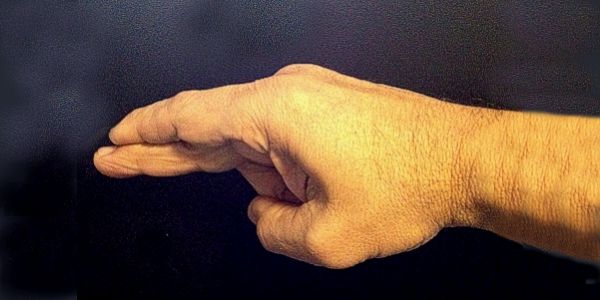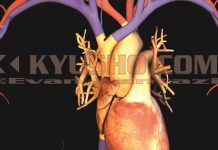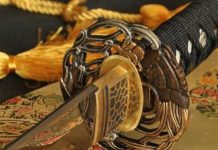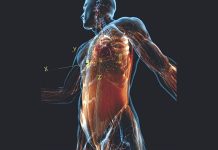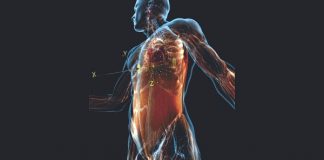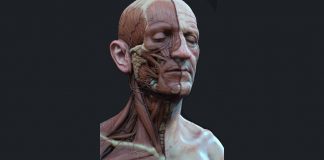Dim Mak vs Kyusho: They are very Different
Dim Mak / Dian Xue: 點穴 Death Touch or Delayed Death Touch
Kyusho: 急所 Vital Point
Although it appears they may be the same (most people working with either named classification claim this), as both disciplines attack vital areas, they are very different… in their modern adaptions. In fact modern Kyusho is very far removed from the original and can no longer therefore be associated with Dim Mak / Dian Xue, as they are now so vastly different.
I say this for many reasons, but first and foremost as killing the opponent was the main objection in past disciplines, the modern Kyusho is geared only toward dysfunction up to and including unconsciousness. Even the names tell a differing story as there is no concept of death or killing in the Kyusho kanji or terminology. There is also a quest in Kyusho for instant reaction, something that is far removed from the concept of the delayed terminology or methodologies of Dim Mak/Dian Xue. So what is the determining factor that separates these two into their own entity (not to be confused as the same)?
First neither are the based on acupuncture points… this is important as many people are misled or believe that this is the case, but it is simply not the true mechanism behind either… please see earlier post “No Point” which will explain this aspect in greater detail. It is not based on Chi, elements, cycles or other Traditional Chinese Medical paradigms.
Some others believe that it is as simple as one attacking nerve and one is attacking blood vessels, which in part is true but far from the whole story or warrant. A simple idea to think of; Dim Mak takes a certain time to cause it’s dysfunctions and ultimate goal, whereas Kyusho is instant… so that alone tells you it is different in structure and therefore delivery to accomplish. Reading old writings or claims of effect and transposing them on modern practices is not viable or correct as they have diverged from each other significantly and the future will see even more divergence. This is not to say it is good or bad, but just to let the reader know and understand what is occurring.
As we could suspect, they are both attacks on the physiological processes and functionality but there are several layers of these and although all overlap or influence each other in some aspect, they do not control them. One in fact is actually targeting the bodies’ innate protections and is in part working to protect the other functions and physiology. So using the both names under the same training is simply incorrect, if serious training is desired, the instructor needs to be questioned as to the similarities, differences and correlations to ascertain if they really know one, both or really neither in depth. But more important than talk is action, can they do it, can they show it and can they then teach it.
For clarity we will use the blood attacks (superficial level) of Dim Mak and the nerve attacks of Kyusho in comparison to illustrate the differences and divergences.
When the blood is attacked via strikes or compression to the vascular tissue, the blood pressure drops quickly to avoid more adverse effect on the body. This causes several observable as well as felt responses that we can ascertain even visually what has occurred. These observable traits are a delayed affect with a fading or slow weakening of the body as it falls limp to the floor. The depth of the attack is seen as when you lift the head of the felled individual even if seemingly awake on the floor (although not capable of coherent thought or body control) with symptoms such as nausea, cold sweats and skin discolorations. Also observable is when they are lifted to revive, they pass out again as their blood pressure is again affected. This affect lasts for much longer than when the nerve is attacked and the recipient is not able to get back into the practice readily, with deeper attacks and or affect the individual will feel the symptoms for a week or two.
When the nerve is solely attacked there is an instant reaction that is designed to protect the body by tightening the muscles, loosening the joints, withdrawing from the attack in an instantaneous reaction (Reflexive). When attacking the nerve we can realize the difference even from outward appearances as we see very quick reaction, falling, stiffening of the body or even the appearance that the recipient jumps to the ground. The revival is instant and there are so side effects that last for long time spans as in blood attack.
It must also be note that the revival processes are very different and the Nerve revival will not help the recipient, in fact the positioning to even perform it will worsen the effect on them. So there is so much more that people tend to ignore or negate when naming a process they work… we must (as touch bearers for the art), make sure we are accurate in description, potent in application and conscientious in passing correct information for our future generations.
I will say in my opinion, in our modern society that Dim Mak is not the best model for self-protection, Kyusho is far more applicable, instant and non-damaging or life threatening. However both must be studied (if only for historical record and perspective), to gain full worth of either. Of course one can realize great skill in Kyusho without ever studying older original aspects of Dim Mak, however after studying the Dim Mak both separately and in correlation with Kyusho, significant new understanding and capabilities are possible.
Also to fully appreciate the old forms (from historical as well as practical use), one must understand these differences. Reading Kyusho into these forms is incredibly beneficial and helps the practitioner develop more in line with the original way, but to fully appreciate and understand them we must go back to the original intent… and that is not modern Kyusho.
The hand position most associated with Dim Mak is seen above, however there are 6 hands that are far better that were listed in the Bible of Karate – The “Bubishi” That we will cover in the next article.
© Evan Pantazi 2014
www.kyusho.com

